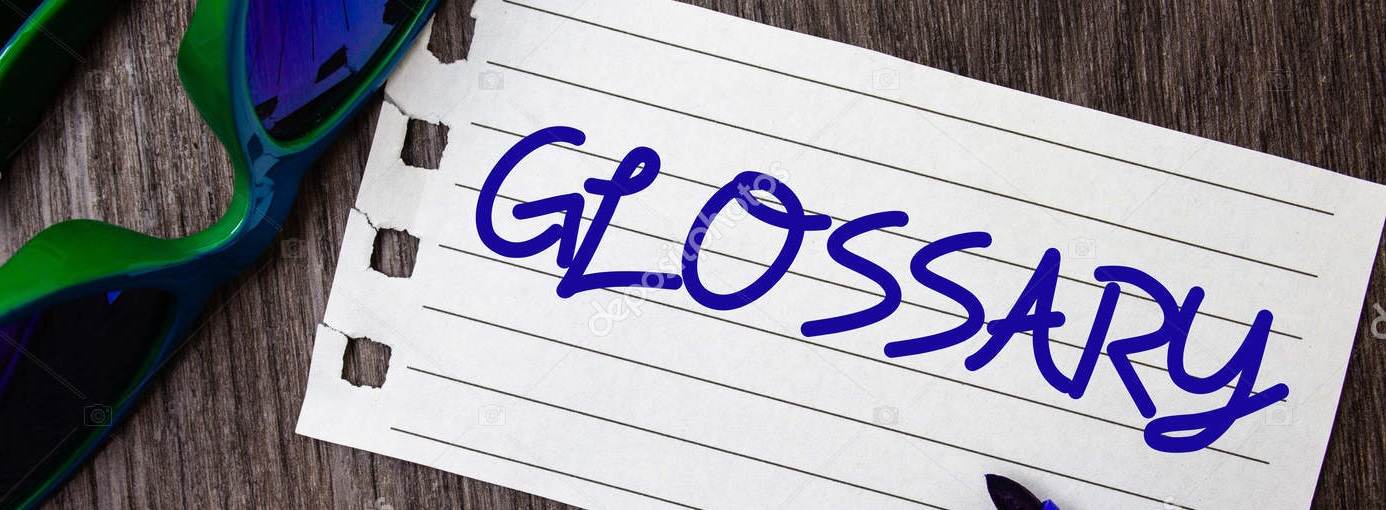Glossary of Writing Terms
Welcome to the world of writing! There are certain terms and phrases that you will come across as you enter this wonderful world. Word-Mart has compiled a list of writing terms and phrases for your reference. This is by no means a comprehensive glossary, but as complete as we could make it for these pages. We hope it proves to be useful to Word-Mart’s visitors.

In case you feel there are other words that should have been included, or you need explanations of any of these terms, please feel free to write to us at [email protected]
A
About the Author: Relevant information about the author, written for books, proposals, articles, and websites. Usually a couple of paragraphs to one page, written in the third person.
Acrostic: A sentence where the first letter of each word of the sentence helps to remember the spelling of a word, or order of things. For example – Never Eat Sour Wieners = North, East, South, West.
Advance: A percentage of the money paid to the writer by a publisher prior to publication of the book. Advances are paid against future royalties, and are paid back to the publisher once the book starts earning royalties.
Agent: An individual who markets creative works to publishers. Agents charge a commission of around 10 to 20 percent, rather than charging a fee.
All Rights: The publication owns all the rights to the work in all the media worldwide, but does not own the copyright.
Allegory: A narrative technique in which the characters are portrayed as things or concepts in order to convey a message. Usually used for satirical or political purposes.
Alliteration: A series of words in a sentence all beginning with the same sound. For example: Sing a song of six-pence.
Ambiance: The feeling or mood of a particular scene or setting.
Ambiguity: Allows for two or more simultaneous interpretations of a word, phrase, action, or situation, all of which can be supported by the context of a work.
Analogy: A comparison of two unlike things, used to explain or illustrate a concept.
Anaphora: Several consecutive sentences all starting with the same words. For example – I will not give up. I will do it. I will succeed.
Antagonist: The main character or force in a fiction that tries to stop the protagonist (the hero or heroine of the story) from achieving his/her goal.
Anthology: A collection of short stories written by various authors, compiled in one book or journal.
Antonyms: Words which are opposites in meaning. For example – come and go, clean and dirty, good and bad, etc.
Assignment: A piece of writing that a writer has been assigned to write by an editor or publisher for a pre-determined fee.
Assonance: Repetition of internal vowel sounds in nearby words that do not end the same, used to emphasize important words in a line. For example – asleep under a tree.
Autobiography: The writer’s own life story.
Backlist: Books published before the present year, but still in print.
Ballad: A narrative folksong, usually created by common people and passed on orally.
Beat: One count pause in speech, action, or poetry.
Bibliography: The list of books, magazines, journals, people, websites, or any other resources that you consulted in the process of writing a book, article, or paper.
Bimonthly: Once every two months.
Biography: A life story of someone other than the writer’s.
Bionote (Bio): A short 2 or 3 sentence description of the author written in the 3rd person, usually to accompany an article.
Biweekly: Once every two weeks.
Blank Verse: Poetry that doesn’t rhyme.
Boilerplate: A standard publishing contract, with no changes made by the author or agent. The boilerplate is the starting point only, and later changes are usually made.
Book Review: A summary of a book, including its critique.
Byline: The author’s name appearing with his/her published work.
Canon: Works generally considered by scholars, critics, and teachers to be the most important to read and study.
Caption: A brief description of a picture, graph, table, or diagram.
Characterization: The author’s expression of a character’s personality through the use of action, dialogue, thought, or commentary.
Clichй: An overused expression.
Climax: The moment of greatest intensity in a story, usually the point where the central character/protagonist faces and deals with the consequences of all his/her actions.
Clips: Published samples of writings that a writer submits with queries to prospective markets. Sometimes called “tear sheets”.
Closet Drama: A play written to be read rather than performed on stage.
Connotation: Implications that go beyond the literal meaning of the word.
Copyediting: Checking for errors in spelling, grammar, punctuation and word usage.
Copyright: The ownership by an author of his or her work. Copyright laws recognize the author’s right of ownership of anything that the author writes immediately upon its creation.
Couplet: Two consecutive lines of poetry that usually rhyme and have the same meter.
Cover Letter: A short letter accompanying a manuscript, proposal, or resume that introduces you, your work, and your credits. No more than one page.
CV: Curriculum Vitae – a short one page resume.